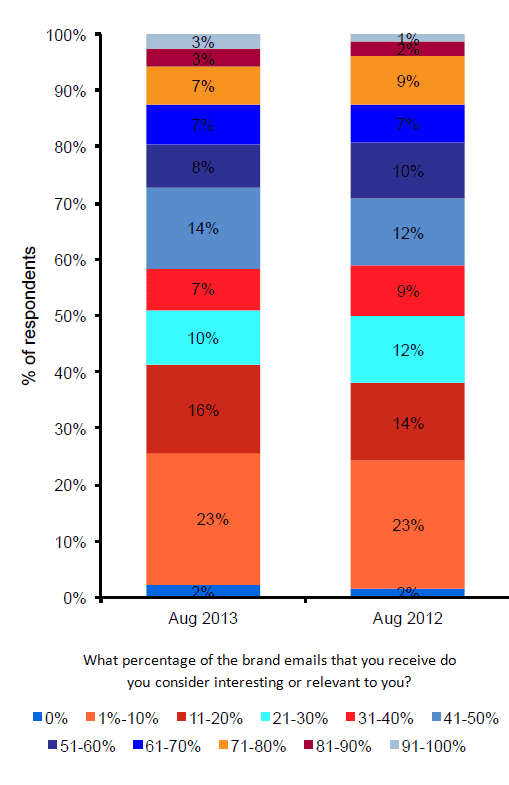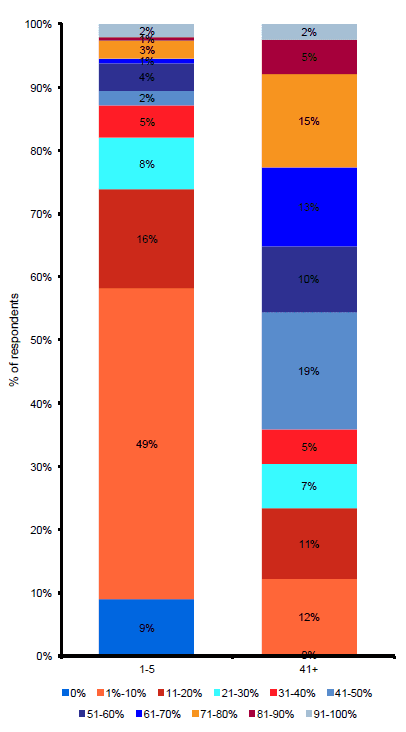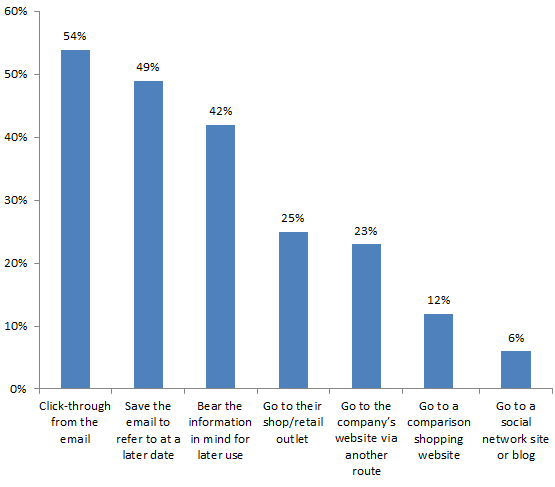New survey challenges the myths about consumer email relevancy
Each year, the UK's DMA, fast.MAP and Alchemy Worx produce the Email Tracking Report, covering email attitudes and email-related behaviours among consumers.
The 2013 survey results challenge a few myths about consumer inboxes. For example, of those signed up to at least some mail from brands, almost half of consumers (48%) get less than three a day on average.
Below the report's infographic from the DMA I will look at some specific charts around email relevancy, which have some surprises! I wrote the summary and commentary for the survey so I can recommend some of the most useful data points.

How relevant are marketing emails?
One of the many messages of the report is that consumers distinguish between "marketing mails" in general and the marketing mails they actually get. Putting it simplistically, ask people if they like emails from "supermarkets", they'll say no. Ask them if they like their emails from Tesco, they'll say yes.
This distinction often gets ignored in the public debate over email marketing.
Email relevancy has remained steady, despite increased competition for online attention and rising expectations. When respondents were asked about how relevant they find the brand emails they get:
- 28% found over half relevant
- Around half found at least one in three relevant
Mind you, 25% found no more than one in ten such mails relevant (below data used with the permission of the DMA):

A closer look at the numbers, however, reveals that those less positive about the relevancy of marketing mails aren't getting many anyway. Contrast, for example, the opinions of those who get just 1-5 such emails a week (the left bar) with those who get over 41 (the right bar). 58% of the former find no more than 1 in 10 relevant, but only 12% of those high-volume recipients say the same (below data used with the permission of the DMA):

There's a similar difference in relevancy when you look at people getting mails from many brands: the survey found those getting mails from more brands tend to rate relevance higher than those getting emails from just a few.
The logical conclusion is that the relevancy of actual marketing emails from trusted brands is effectively higher than consumer surveys indicate, since the averages are pulled down by people who aren't on many lists anyway.
It's another reminder that people sign up to mails for a reason. They want them. Yet many marketers are almost apologetic about sending them, what Dela Quist has called fear and self-loathing in email marketing.
One conclusion reached in the study is that marketers should further exploit these differences between consumer attitudes to marketing mails in general and to mails they get from trusted brands, for example by:
- Testing frequency increases
- Being more aggressive about promoting the list to existing customers
- Reminding people of the broader relationship with the brand in the email itself through personalisation, purchase-related messaging, stronger brand signals and similar
And there's more...
Emails are also more relevant than your campaign metrics suggest. My colleague Tim Watson recently highlighted how email marketing influences sales, even when there is no clickthrough.
The Email Tracker Report confirms Tim's results. When asked how they might respond to an interesting email, look at how many mention a positive response that traditional campaign metrics would never reveal, such as going to a retail outlet (below data used with the permission of the DMA):

Makes you think, doesn't it? If you do want to demonstrate email's influence on other channels, Tim's post and Ken Magill's 3-part series has some advice.
Author’s note and disclaimer. Thanks to the UK’s DMA for giving permission to use data and text from the 2013 Email Tracking Report, for which I wrote the commentary on the survey results.









